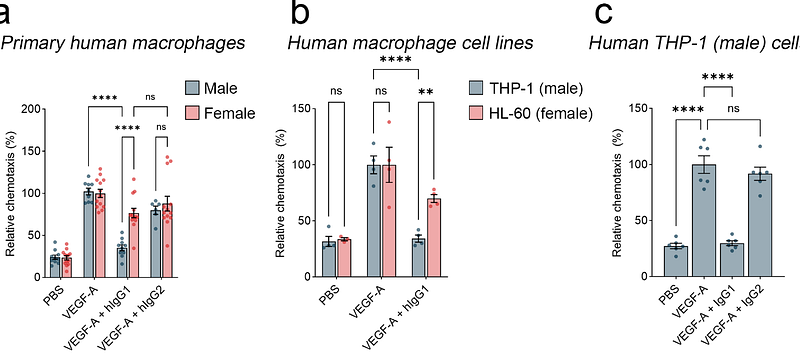Sex differences in human IgG1-mediated angiogenesis inhibition depend on Y chromosome-encoded DDX3Y

Sex differences in human IgG1-mediated angiogenesis inhibition depend on Y chromosome-encoded DDX3Y
Argyle, D. A.; Dholkawala, R.; Makin, R. D.; Pereira, F.; Nagasaka, Y.; Huang, P.; Wang, S.-B.; Apicella, I.; Arneja, A.; Luckey, C. J.; Walsh, K. A.; Arnold, A. P.; Ambati, J.; Gelfand, B. D.
AbstractPrevalent diseases of angiogenesis such as age-related macular degeneration (AMD) exhibit sex-specific prevalence, with female sex being an independent risk factor for the advanced neovascular form of AMD. The basis for these sex differences is poorly understood. Here, we quantify the impact of sex on suppression of aberrant choroidal angiogenesis by human immunoglobulin 1 (hIgG1), which possesses class-wide, antigen-independent anti-angiogenic activity. Males exhibited significantly more robust hIgG1-induced chemotaxis inhibition in primary human and mouse macrophages and anti-angiogenic activity in mouse laser-induced choroidal neovascularization (CNV). Four core genotypes and XY* Turner Syndrome mouse models revealed the Y chromosome as a sex-biasing factor contributing to hIgG1 responses. Transcriptomic and RNAi screening identified DEAD-Box Helicase 3 Y-Linked (DDX3Y) as necessary for the robust inhibitory effects of hIgG1 in males. Male mice as well as human and mouse macrophages lacking DDX3Y exhibited blunted hIgG1 responses in CNV and macrophage chemotaxis, resembling those of females. These results unveil a novel mechanism through which sex chromosome complement differences can impact key processes involved in AMD, carrying implications for various sex-related disorders and conditions involving angiogenesis.